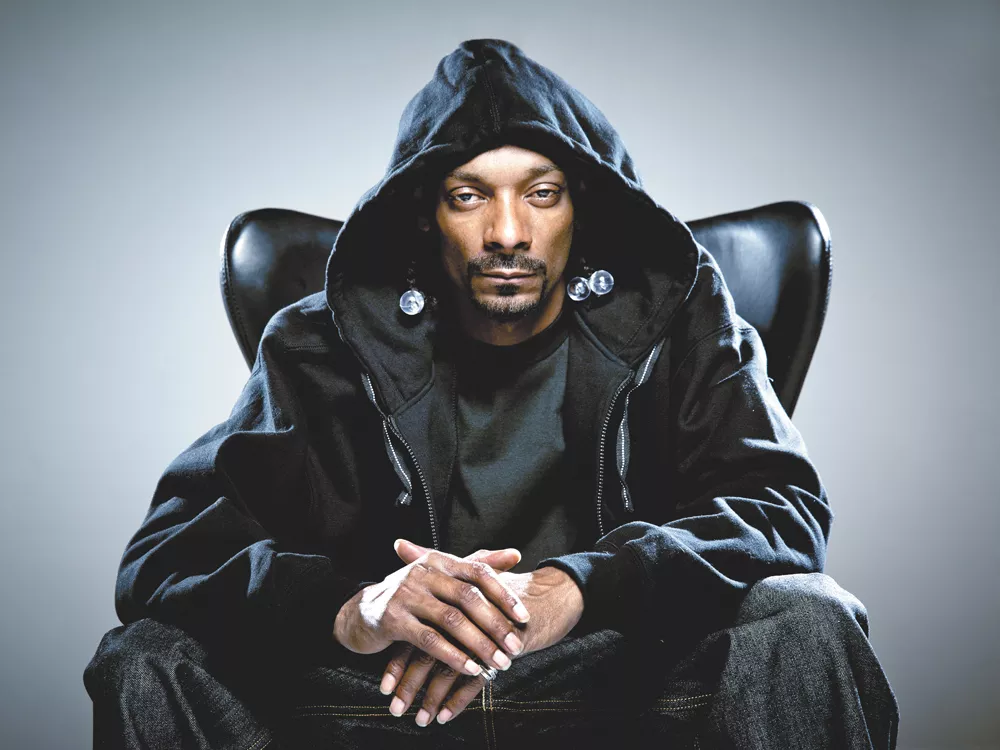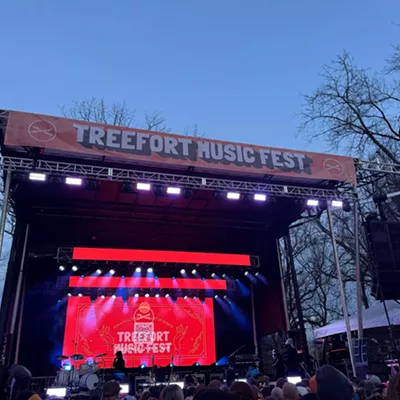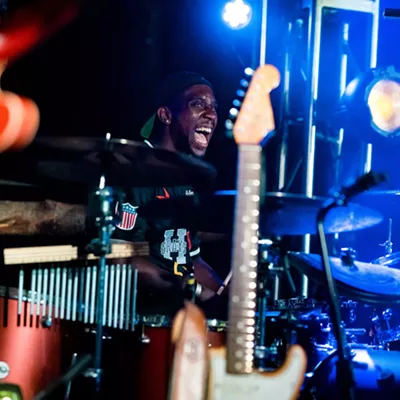Usually, you kept your eyes down in the locker room. But as I twisted my combination into the padlock holding my basket full of gym clothes, I couldn’t help but watch the girl with the purple marker at the end of the aisle of lockers.
In loopy letters, she was writing “Rollin down the street smokin indigo, sippin on gin and juice” on the wall of the Highland Park Junior High school girls’ locker room. Her and her friends would sing that line over and over as they changed for PE class — and I wondered, what the hell was indigo?
Nothing, I’d find out. But most seventh graders at my school didn’t know what endo or indo was, let alone much of anything that Snoop Dogg — then Snoop Doggy Dogg — was saying on his debut album Doggystyle.
It didn’t matter. Over the next year — as gangsta rap caught on in our predominantly white Southwest Portland public school, as boys’ pants started to sag lower, as our parents started getting letters discouraging their children from wearing red and blue clothing to school — you’d have thought our school was on the edge of the ghetto.
It wasn’t.
Across the country, lots of kids just like us were rushing to buy Doggystyle. That year — 1993 — Snoop Doggy Dogg became a household name, and his album went four times platinum in less than a year. At the same time, Nirvana and Pearl Jam and the whole Seattle grunge wave — a punk derived movement — was in overdrive. And though that had snared so many kids, gangsta rap seemed to catch the ones who didn’t get amped up at the sight of skinny emotional guys or Eddie Vedder hanging from rafters.
Like the fictional characters in Scarface or Rambo or The Godfather, gangsta rappers like Snoop and Dre were one thing, if not anything else: they were real life badass motherf---ers — on the streets, and on the mic. Where Dr. Dre had been bold, brusque and macho on The Chronic, Snoop was a skinny tall guy with an acrobatic style and a smooth, soft way of delivering his message. Snoop seemed to cast a wider net. He made even seventh grade girls want to party.
So here were these locker room girls — singing misogynist, homophobic words about life in the ghetto — acting like they got it. They were hardly alone in mimicking the culture of the streets of Compton. And, considering the way Americans have always romanticized the rebels among us, it made sense.
“[T]he violence and misogyny and lustful materialism that characterize some rap songs are as deeply American as the hokey music that rappers appropriate. The fact is, this country was in love with outlaws and crime and violence long before hip-hop,” journalist Michael Saunders wrote in a 1996 Boston Globe article about gangsta rappers.
Where the men of grunge were the music world’s slam poets — their lyrics often obtuse and guarded — rappers were revolutionaries and zealots, taking the American experience they’d be given and throwing it back in the face of those who’d given it to them.
So its interesting, today, to see Snoop Dogg go from the sneering, brooding young rapper who’d ditched gang violence and dealing crack, to who he is today. In July of this year, Snoop announced a new moniker — Snoop Lion — and that he’d been reincarnated by a Rastafarian priest. His new calling? Reggae.
But — from what’s available to hear — this new music won’t be protest songs a la Bob Marley. The lyrics of Snoop Lion’s first single, “Here Comes the King” off his forthcoming Reincarnated record, are the drippy thoughts of a just-saved born-again. And while it’s refreshing to see an artist from such a macho world be so up front about his spirituality and individuality, where does it leave those kids in the locker room? Where is the gritty bottom line for them?
Because that violence and anger in music is vital. It is “the manifestation of a feeling of hopelessness and discontent” in America, according to a Stanford University study. For kids, it’s easier to have Snoop and Dre say “f--- the police” than to do it yourself. It’s safer for everyone, really.
But when rappers like Snoop get old and spiritual, can it be just as cathartic for listeners? Where a kid may have once felt cleansed by hearing Snoop and Dre’s struggles back in ’93, as an adult, does he feel peace from this new direction Snoop has taken?
Because back in ’93, there was a great palpable tension in music. And it seemed that for a lot of kids at my school, controversial gangsta rappers gave us a real-life lesson that there was a lot in the world to be pissed off about — and that we didn’t have to be from the streets to engage with it.
And Snoop Dogg’s new-found inner peace just isn’t as contagious.
Snoop Dogg with Pac Div and MC Squared • Wed, Dec. 19 at 8:30 pm • Knitting Factory • Sold out • All-ages • ticketfly.com • 244-3279
















